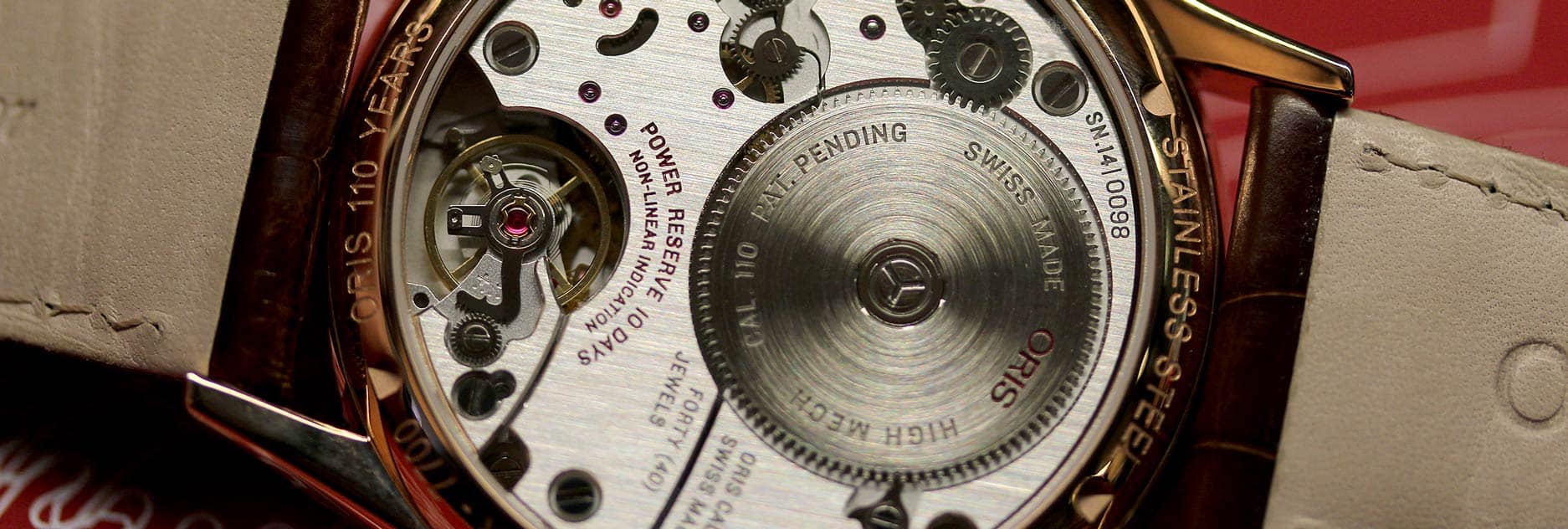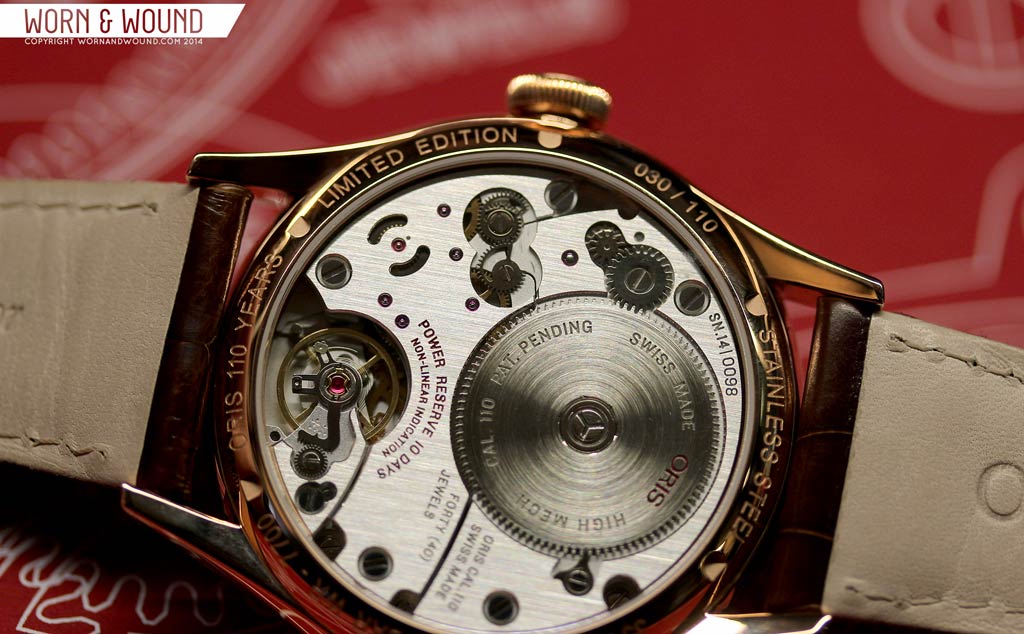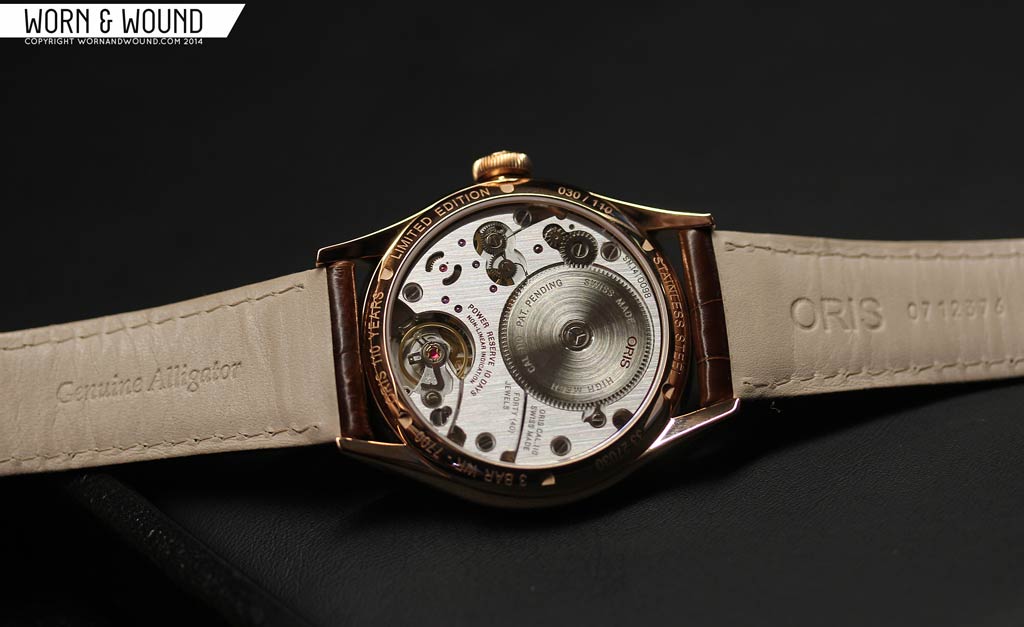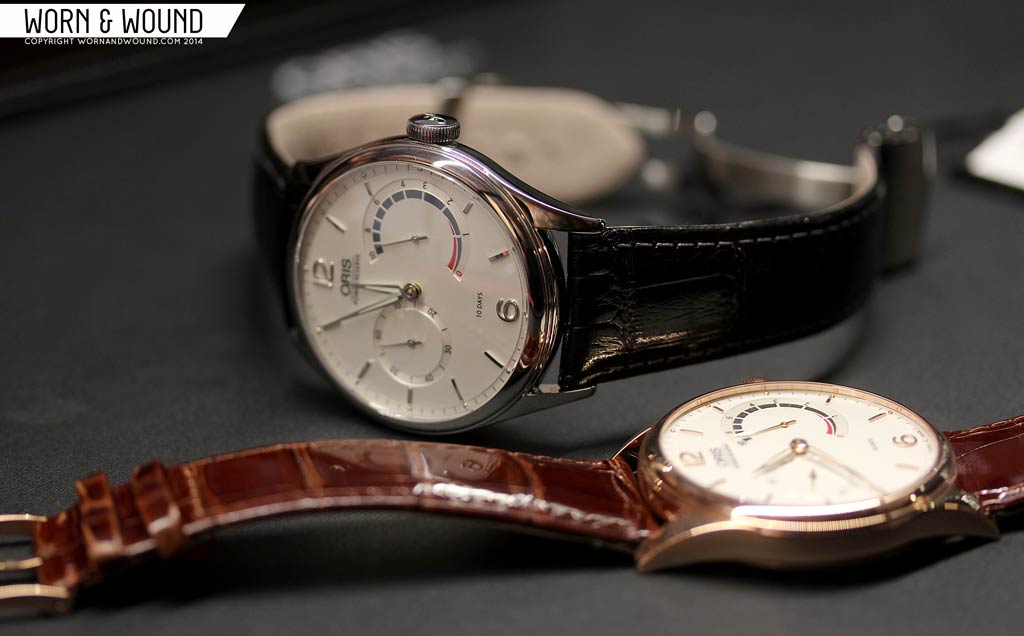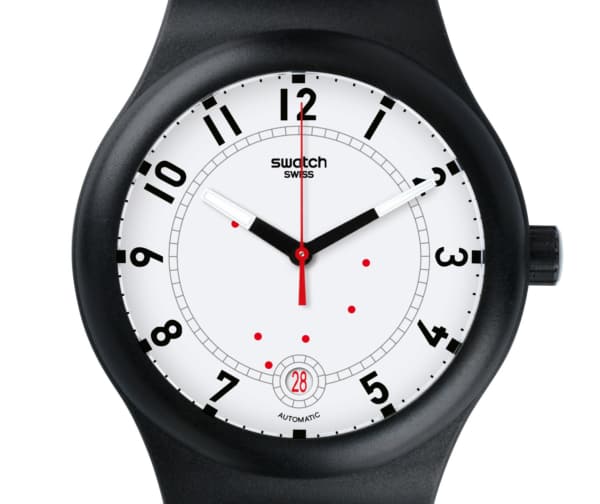Oris is one of those brands that does things their own way. They’re independently owned for a start, and have been since Paul Cattin and Georges Christian turned up in Hölstein to found a watch factory in 1904. But there’s always been a sense that they’re independent of thought too.
They seem to get a real joy doing things that other, less independent makers can’t with their layers of management and focus groups. So, where another maker would celebrate 110 years of putting pallet to balance with something brash, bejeweled and blingy, Oris has gone the other way.
The new Oris caliber 110 (see what they did there?) is absolutely unadorned. The edges of the movement’s steel bridges are bevelled and polished, but their surfaces are simply brushed. The only design concession is the ORIS name in red on the barrel, echoing the usual trademark red self-winding rotor motif. That’s perhaps a bit of watchmaker’s humour, given that this is a handwound movement.
This is Oris’ first calibre designed and assembled in-house for 35 years (previously, the maker has developed modules in house and had ETA and Sellita put them together). And although it looks plain, the engineering inside it is anything but. This is a movement that’s taken 10 years to develop with the help of L’École Téchnique Le Locle. Looking at the 177-part specification, one quickly sees why. It runs at 21,600vph (3hz) and the calibre has a 10 day power reserve and a non-linear power reserve indicator. This is the first time these two complications have featured in one watch.
Now, at this point you might be thinking “Yeah, neat, but so what?” Well, the ‘so what’ is – typically for Oris – all in the engineering. To power a handwound watch for 10 days you need to overcome three challenges. First, you need to make a serious mainspring. In this case, a 1.8m (5′ 11″ – yes, really) mainspring.
Then, if you opt for a single barrel, you need somewhere to store it that isn’t going to make your wristwatch look like Harrison’s H4 marine chronometer. In this case, Oris have managed to make a watch with a 1.8m mainspring in a movement just 34mm in diameter. The case measures a relatively modest 43mm. The barrel itself takes up around 1/3 of the movement’s area.
The third challenge is to get that mainspring to deliver its power to the going train evenly throughout its 10 day winding life. Yep. They’ve beaten that one too. And that’s where the non-linear power indicator comes in. It’s not called ‘non-linear’ because it’s curved but because it displays the power reserve in a non-linear way. At the top of the scale, when the mainspring is fully wound, the day markers showing the reserve are close together. They’re further apart at the bottom of the scale. So, as the spring winds down the indicator moves faster giving a clear indication of the need to get winding.
And you can see everything through the clear, sapphire caseback. In fact, this is one watch you might prefer to wear with the movement facing out. That’s not to say the dial is ugly. Not at all. You get an opaline-silver coloured dial, applied numerals and indicies and rather elegant, polished nickel tapered sword hands. Running seconds at 9 o’clock and that gorgeous power reserve indicator at 3 o’clock. And, the sole concession to celebratory bling is that you can specify your cal. 110 in rose gold. The stainless steel option seems rather more fitting though. Functional, elegant, efficient and well-engineered.
As this is the first in-house designed and assembled movement in 35 years for Oris, you might expect the price to be a little eye-watering. In fact, the stainless steel model comes in at $6,500 with the 18 carat rose gold at $16,753 (14,800CHF) at today’s exchange rate. Although not exactly pocket money prices, this is a landmark movement for Oris and you get a watch that’s hand-assembled and tested in Oris’s Hölstein factory. I suspect it won’t only be your reviewer that’s tempted…
By Mark McArthur-Christie









 Featured Videos
Featured Videos




